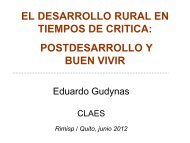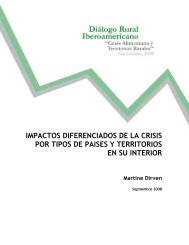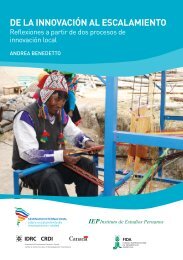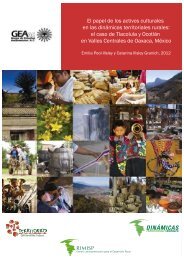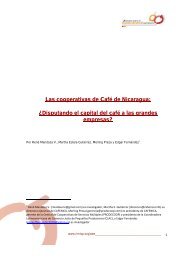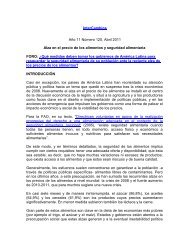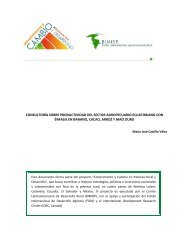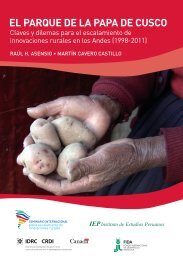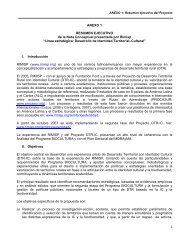Vietnam's Agrarian Reform, Rural Livelihood and Policy ... - Rimisp
Vietnam's Agrarian Reform, Rural Livelihood and Policy ... - Rimisp
Vietnam's Agrarian Reform, Rural Livelihood and Policy ... - Rimisp
You also want an ePaper? Increase the reach of your titles
YUMPU automatically turns print PDFs into web optimized ePapers that Google loves.
stabilizing food prices, increasing real wages, <strong>and</strong> creating opportunities for farmers to participate inmore profitable, higher-value farming <strong>and</strong> nonfarm activities (Minot <strong>and</strong> Goletti, 2000).<strong>Reform</strong>s have led to greater food security <strong>and</strong> better nutrition, partly by increasing the production ofrice, by far the most important staple food in the Vietnamese diet. Rice is consumed by 99.9 percent ofVietnamese households <strong>and</strong> accounts for about 75 percent of the total caloric intake of a typicalhousehold. From 1980 to 1984, farmers saw their rice yields rise by about 32 percent in the North <strong>and</strong>24 percent in the South as a result of Directive 100 <strong>and</strong> subsequent complementary reforms, followedby similar gains as rice yields increased from 3.2 to 4.9 tons per hectare between 1990 <strong>and</strong> 2006, as aresult of Resolution 10 <strong>and</strong> other policy <strong>and</strong> economic changes (Pingali <strong>and</strong> Vo T.X, 1992).Increased food production <strong>and</strong> higher incomes have led to more diversified diets, with measurablebenefits for nutrition. Between 1993 <strong>and</strong> 1998, the rates of underweight in children younger than agefive fell slowly, but rates of stunting in children dropped dramatically, from 53 to 33 percent (Fritzen,2002). The economic changes launched by the Doi Moi reforms also pulled many Vietnamese out ofpoverty. From 1993 to 2002, the incidence of poverty in Vietnam fell from 58 to 29 percent (WorldBank, 2003). The number of people living in absolute poverty (however it is defined) is still high, butthe poverty that persists today reflects the fact that some households still have poor access to l<strong>and</strong> orhave access only to poor-quality l<strong>and</strong>.During the 1990s, rice prices increased substantially. Nearly three-quarters of Vietnamese householdsboth produced <strong>and</strong> consumed rice, but households that produced more rice than they consumedbenefited from the higher prices. On average, higher rice prices thus helped households in rural areas,where most of the poor live, at the expense of households in urban areas (Minot <strong>and</strong> Goletti, 2000).2. <strong>Policy</strong> Issues for Vietnam’s Agriculture <strong>and</strong> <strong>Rural</strong> Development in the NewMillenniumSince 2001, Vietnam’s agricultural growth has been continuing at 3.7 percent per annum despite adifficult external environment of low commodity prices on world markets. Food per capita increasedfrom 420 kg in 2001 to 470 kg in 2007, ensuring national food security <strong>and</strong> enabling more than 48



